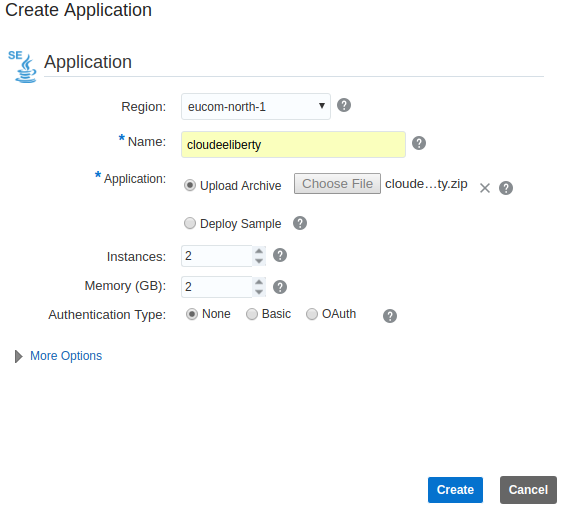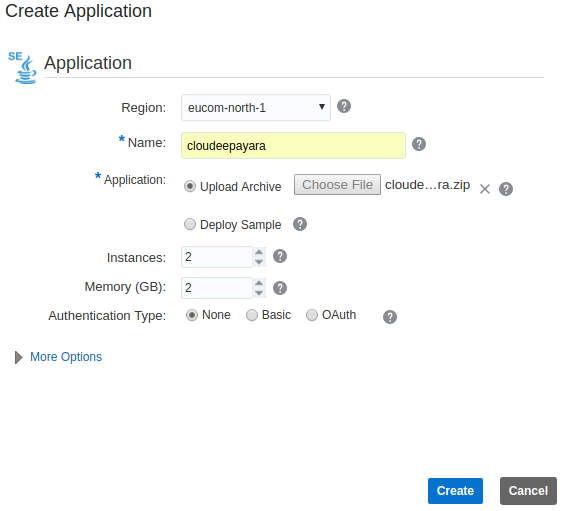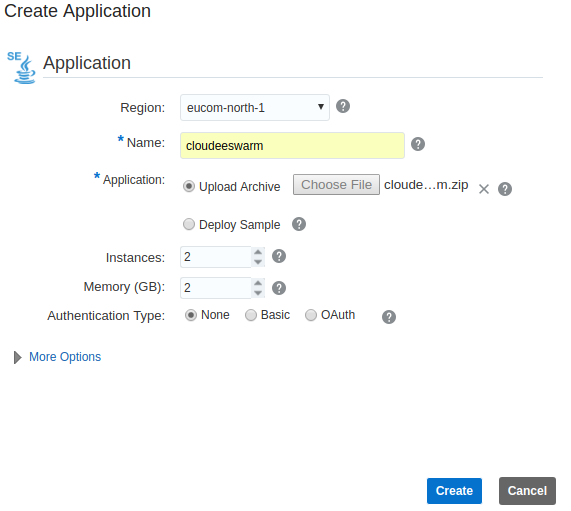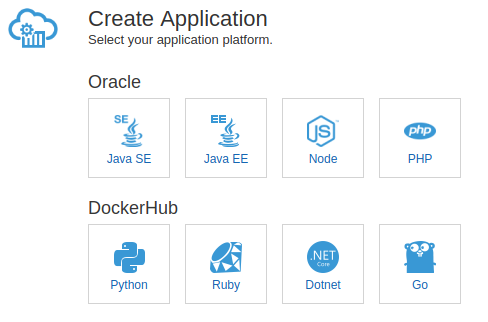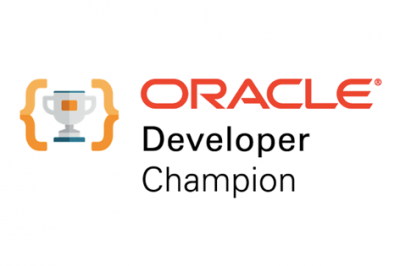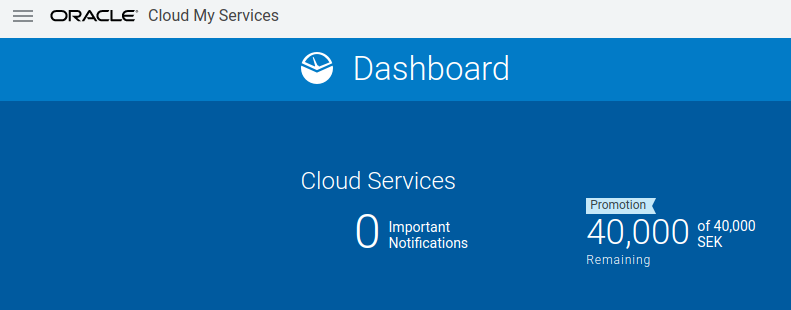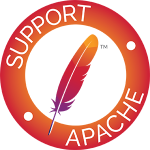In this blog post, I will describe how to deploy the CloudEE Duke application packaged in a Kumuluz EE über-jar to Oracle Application Container Cloud.
The deployment artifact required for deployment in Oracle Application Container Cloud is a ZIP archive containing the application über-jar and a manifest file (manifest.json). The Kumuluz EE version of the manifest.json for CloudEE Duke is listed below.
{
"runtime": {
"majorVersion": "8"
},
"command": "java -Dkumuluzee.server.http.port=$PORT -jar cloudee-duke.jar",
"release": {
"version": "1.0",
"build": "1",
"commit": "123"
},
"notes": "Dukes says hello from Kumuluz EE"
}
You need to specify the port for Kumuluz EE in the startup command. This is done by using the $PORT environment variable.
The über-jar is produced by using the Kumuluz Maven Plugin:
<plugin>
<groupId>com.kumuluz.ee</groupId>
<artifactId>kumuluzee-maven-plugin</artifactId>
<version>${version.kumuluz}</version>
<executions>
<execution>
<id>package</id>
<goals>
<goal>repackage</goal>
</goals>
</execution>
</executions>
</plugin>
See the complete pom.xml for an example on how to produce the deployable ZIP archive with the maven command:
mvn clean package assembly:single -Pkumuluz
This will produce a file called cloudee-duke-oracle-kumuluz.zip in the target folder. This is the ZIP archive you will deploy to Oracle Application Container Cloud as shown in the screenshot below.
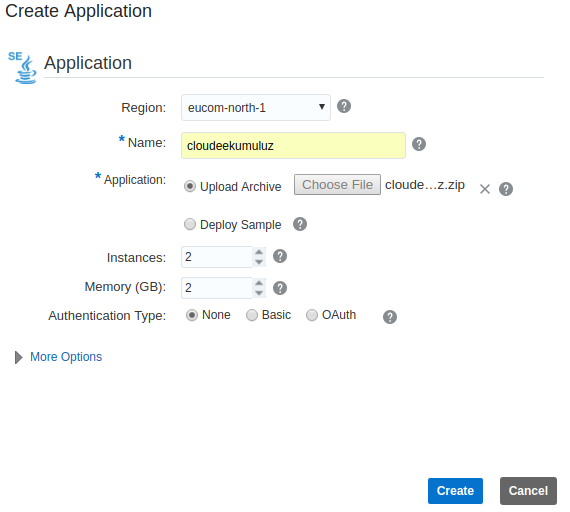
When your application is deployed, you should be able to access the hello endpoint
https://<dependsonyouraccount>.oraclecloud.com/hello
Duke says Hello!
You will also have the health and metrics endpoints provided by the MicroProfile implementation
https://<dependsonyouraccount>.oraclecloud.com/health
{
outcome: “UP”,
checks: [ ]
}
https://<dependsonyouraccount>.oraclecloud.com/metrics
# TYPE base:gc_ps_mark_sweep_count counter
# HELP base:gc_ps_mark_sweep_count Displays the total number of collections that have occurred. This attribute lists -1 if the collection count is undefined for this collector.
base:gc_ps_mark_sweep_count{serviceVersion=”1.0.0″,environment=”dev”,instanceId=”110cd814-3d12-4198-80eb-694196f58993″,serviceName=”UNKNOWN”} 2
# TYPE base:classloader_total_loaded_class_count counter


